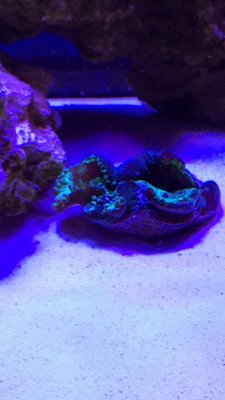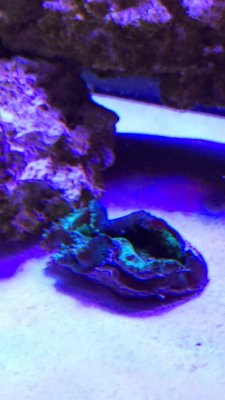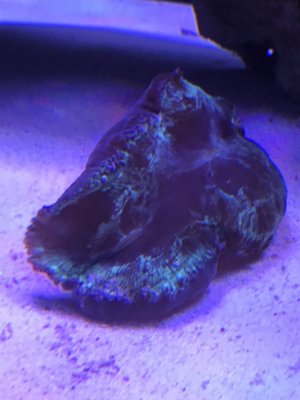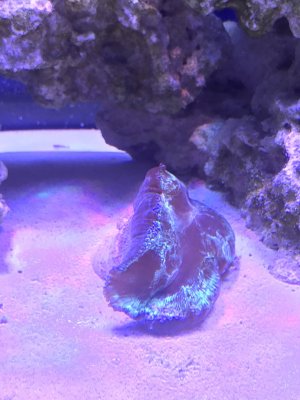Elegance Coral, Catalaphyllia jardinei, is a LPS that is very beautiful easy and is one of my favorite LPS. Since early 2000, it was well known by reefers that Elegance coral is easy to care for, unless it contracted Elegance Coral Syndrome (ECS), a universally fatal disease with no known cure.
Elegance Coral Syndrome was coined in 2006 by Eric Borneman, a pioneer reefer who unfortunately no longer involves with reefing world, to describe this infectious disease of Elegance corals. He discussed about Elegance corals and this disease in detail in January 2008 issue of Reefkeeping, an online magazine published by ReefCentral.com. A link to this article attached below.
http://reefkeeping.com/issues/2008-01/eb/index.php
In this article, Eric recorded his observation of this disease as follow:
I don’t have as much experience as Erick, but in addition to Eric’s observation, I have the following observations:
Pre treatment

Post treatment

Another picture a week later

Alton’s Elegance is on its way to recover fully. I will ask Alton to keep this thread update. I know that ECS have no known cure. If FWD is indeed a cure for ECS, this is a big step in helping us keep Elegance corals, a very beautiful coral, in our reef tanks.
I would like any reefers who have Elegance corals that were infected with ECS, and want to treat them with FWD, please post pre and post images of the corals, and keep update. Hopefully we can come up with a cure for, up to now, an incurable disease of a beautiful and hardy coral.
Elegance Coral Syndrome was coined in 2006 by Eric Borneman, a pioneer reefer who unfortunately no longer involves with reefing world, to describe this infectious disease of Elegance corals. He discussed about Elegance corals and this disease in detail in January 2008 issue of Reefkeeping, an online magazine published by ReefCentral.com. A link to this article attached below.
http://reefkeeping.com/issues/2008-01/eb/index.php
In this article, Eric recorded his observation of this disease as follow:
- Colony’s oral disk first start to swell
- Unexpanded fringe tentacles
- Coral secrete opaque white mucus like web
- Feeding response decline
- Tentacles no longer “sticky”
- Coral’s tissue eventually shrinks and coral dies
I don’t have as much experience as Erick, but in addition to Eric’s observation, I have the following observations:
- Coral initially have localized evidence of disease on oral plate, which then spread to other parts.
- Coral secrete mucus as a response to infection
- Coral worsen with high light exposure and seem to improved, temporary with lower light level
- Coral looks better in AM, worsen as the photo period progress.
Pre treatment
Post treatment
Another picture a week later
Alton’s Elegance is on its way to recover fully. I will ask Alton to keep this thread update. I know that ECS have no known cure. If FWD is indeed a cure for ECS, this is a big step in helping us keep Elegance corals, a very beautiful coral, in our reef tanks.
I would like any reefers who have Elegance corals that were infected with ECS, and want to treat them with FWD, please post pre and post images of the corals, and keep update. Hopefully we can come up with a cure for, up to now, an incurable disease of a beautiful and hardy coral.
Last edited:






















